Results
-
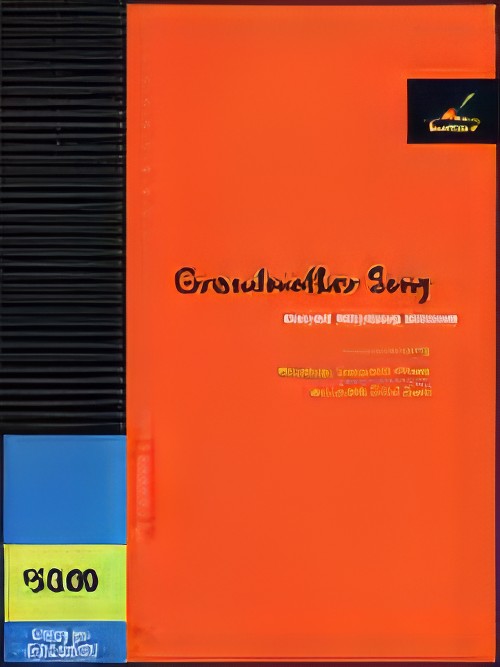 £57.50
£57.50GRANDMOTHER SONG (BandQuest) - Davids, Brent Michael
"Grandmother Song" is an introduction to the Mohican tradition of "sung syllables," or what Native Americans call "vocables." Combining them with traditional wood flute songs, composer Brent Michael Davids offers a fresh look at the "sound" of Native American songs. Band instruments are performed less as musical instruments and more as talking sticks, singing reeds, rustling winds and shooting thunder. Through this beautiful ballad, students are given the materials to understand how Native Americans celebrate the world around them through the blending of words and song. (Includes score and parts.)
Estimated dispatch 7-14 working days
-
 £69.95
£69.95SWEDISH FOLK SONG (Concert Band) - Graham, Peter
Swedish Folk Song, has it's origins in an old Scandinavian melody first adapted by Stuart K. Hine in 1949 to his own sacred hymn, How Great Thou Art. From the quiet opening on the solo flute to the full orchestration of the final statement Graham balances us between echoes of the past and a vibrant present wherein we discover the beauty of the song or hymn, at various levels, once again.
Estimated dispatch 7-14 working days
-
£76.99
Song For Nico - Ben Haemhouts
Song for Nico leads one to suspect that this song was written for someone very special... This beautiful romantic pearl is a quiet moment in every concert programme. It contains beautiful melodies in all instrument groups, always provided with cue-notes for any incomplete orchestras.
Estimated dispatch 7-14 working days
-
 £104.99
£104.99Killing Me Softly with His Song - C. Fox
The tender ballad Killing Me Softly with His Song was written by Charles Fox and Norman Gimbel in 1971, for de American singer Lori Lieberman. She was very impressed with a performance by the then still unknown Don McLean in the Troubadour in Los Angeles. The feelings described in the lyrics are indeed those of Lieberman, but the one who - two years later - made the song world-famous was Roberta Flack. Her version won as many as three Grammy Awards. Since then, Killing Me Softly has been performed by numerous artists, including Herb Alpert, Frank Sinatra, Aretha Franklin, Anne Murray, Luther Vandross, and the Fugees.
Estimated dispatch 7-14 working days
-
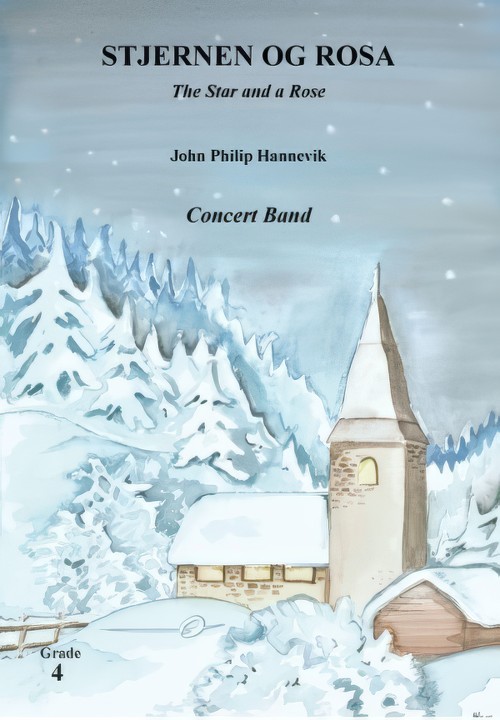 £122.20
£122.20Stjernen og Rosa (The Star and a Rose) (Concert Band - Score and Parts) - Hannevik, John Philip
The Star and a Rose is a big-scale Christmas piece for band, featuring four seasonal chorales.The first is a Gregorian-like chant Hodie Christus natus est.In this section of the piece, a soloist can be placed away from the band, maybe on a gallery. The soloist can be a tenor instrument, maybe trombone, or you can feature a vocal soloist. After this, the music leads us on to the old German Christmas chorale Lo, how a rose e'er blooming. This song is given a fairly rhythmical treatment, but make sure that the melody is presented in a cantabile style. An interlude follows, before the piece presents one of the most used and loved Scandinavian Christmas chorales, Mitt hjerte alltid vanker (My Heart will always wander), composed by the Danish bishop Hans Adolph Brorson around 1732. This song is building towards a climax, before the solo horn brings it all down to the Stable view described in the lyrics. Then comes a transition that brings us in to the final section of the piece, which presents the international Christmas Carol Adeste Fideles. As many will notice, I have borrowed a section from David Wilcocks majestic harmonization towards the end.The title of the piece has its background form the lyrics in My heart will always wander, where the text speaks about the stars in the sky. But also in the Latin text for Adeste Fideles: Stella duce, Magi, Christum adorantes. The Rose is of course from the lyrics in the chorale Lo, how a Rose.Duration: 10.30
Estimated dispatch 7-14 working days
-
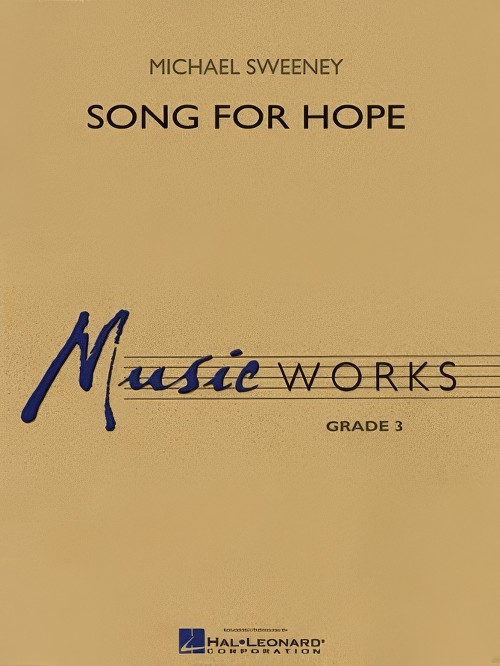 £60.99
£60.99Song for Hope (Concert Band - Score and Parts) - Sweeney, Michael
Written as a memorial for a middle school band student, this sensitive and moving work opens with a chorale played by off-stage brass. A flowing melody stated in the low register is then developed before leading to a brief fanfare-like affirmation. The Korean folk song "You and I" is briefly quoted before returning to the off-stage brass and calm closing passage. A beautifully scored lyric piece for band. Extra players are not required for the off-stage parts.Duration: 4:30
Estimated dispatch 7-14 working days
-
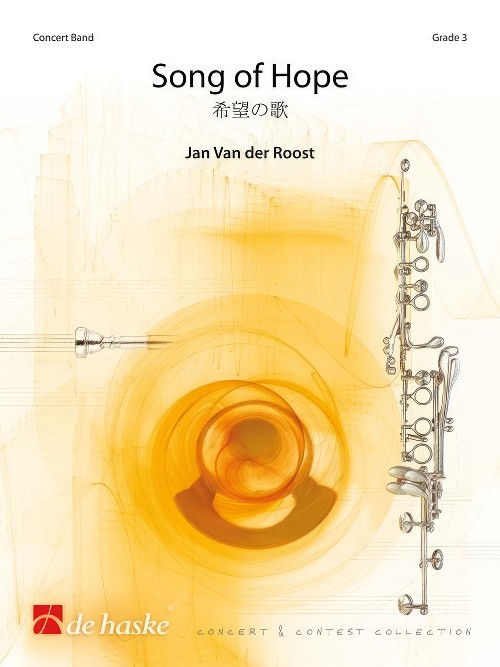 £104.99
£104.99Song of Hope (Concert Band - Score and Parts) - Van der Roost, Jan
2011 was a disastrous year for Japan: on March 11 the northeast of the country suffered a violent earthquake, which triggered a huge tsunami and caused massive damage to people and the environment. The ensuing problems with the nuclear reactor at Fukushima only increased the misery: a black day in the country's history... One almost inevitable consequence of such dramatic circumstances is the particular damage suffered by the cultural arts. And so it was in Japan: various high school wind orchestras in the effected areas lost their practice rooms and/or instruments. It will take a long time before the damage suffered is repaired - and it will take great effort to overcome the psychological effects, too. Focusing on the latter, Yutada Nishida (director of The Bandwagon radio program) asked a few composers for a simple work that could be played by many orchestras. It just so happened that the Osakan Philharmonic Winds (with whom Jan Van der Roost had conducted a concert exclusively of his own works on September 25th) had had a similar idea. This concert saw the baptism of Song of Hope. This piece immediately struck a chord with musicians and audience alike: it begins bleakly in the low register and evolves to a more open, optimistic close. There really is hope for better times!Duration: 4:45
Estimated dispatch 7-14 working days
-
 £54.99
£54.99Away in a Manger Wind Band Set (Score & Parts)
In English-speaking countries 'Away in a Manger' is one of the first Christmas songs to be taught to little children. It is a moving song with simple words, which makes it easy to understand. The song is also known as 'Luther's Cradle Hymn'. This suggests that Martin Luther was the author of the lyrics. According to researchers, however, this is a misconception - the author is unknown. In England 'Away in a Manger' is sung to a different melody than in the USA, for example. The 'English' melody was composed by W.J. Kirkpatrick. Andrew Mackereth made a touching arrangement of the 'English' melody, which suits the tender lyrics perfectly. 01:45
Estimated dispatch 7-14 working days
-
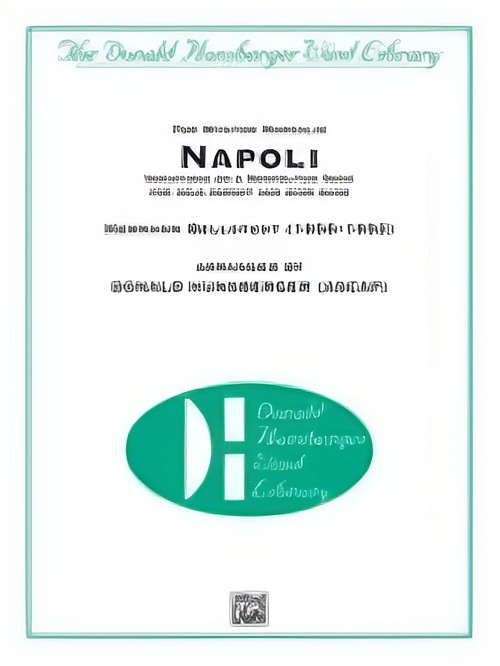 £135.95
£135.95NAPOLI Variations on a Neopolitan Song (Cornet Solo with Intermediate Concert Band) - Hunsberger, Donald
Born in Germany, Hermann Bellstedt immigrated to America in 1867, where his family settled in Cincinnati. A prodigy on the cornet, he played with Patrick Gilmore as cornet soloist and assistant to the famous Ben Bolt, and, in 1904, joined the Sousa Band, playing alongside Walter Rogers and Herbert L. Clarke. Bellstedt's variations on Napoli feature the popular Neopolitan song "Finiculi, Finicula" (composed by Luigi Denza in 1880) that celebrated the funicular railway built up the side of Mt. Vesuvius in 1880. Other popular Amalfi Coast songs include "'O Solo Mio" and "Torna a Sorriento." A variety of solo textures, whimsical to intense, are demonstrated by this Donald Hunsberger arrangement dedicated to Wynton Marsalis as a part of the "Carnaval" project. A grandiose opportunity to feature your cornet or trumpet soloist! (5:45)
Estimated dispatch 7-14 working days
-
 £31.95
£31.95VOYAGES ON A ROWING SONG (Easy Concert Band) - Himes, William
The well-known spiritual Michael, Row the Boat Ashore is the melodic inspiration for Voyages on a Rowing Song, a brilliantly crafted theme and variations selection. Following a dreamlike introduction and presentation of the theme, three variations follow: a rollicking hoe-down , a contemplative chorale, and a commanding march. Each variation focuses on a different motif from Michael, Row the Boat Ashore, with compelling recapitulation of the original theme occurring during the conclusion of the march variation.
Estimated dispatch 7-14 working days
